Chinese Food and Drinks: A Brief History
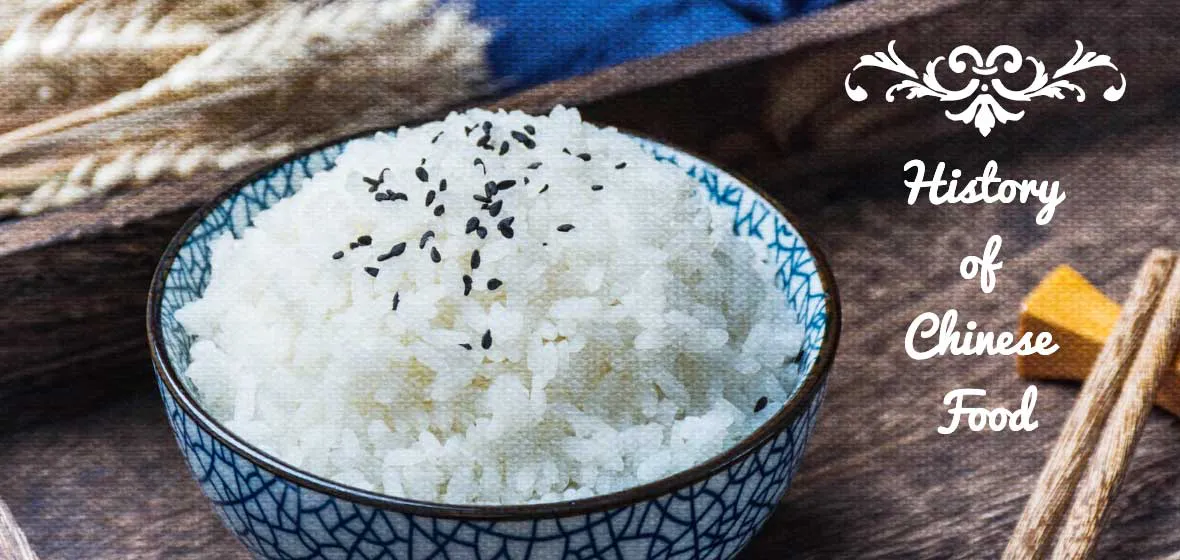
Of all the world’s cuisines, none intrigues and delights more than that of the Chinese. Chinese cuisine has developed over thousands of years, the concepts are ancient and complex, extending beyond sustenance and into the realms of myth and legend, etiquette, social structure, religion, art, nutrition, and harmony – the principle of ying-yang. From the freshest vegetables sauteed to perfection in a wok, to the most flavorful seafood being steamed, this tantalizing cuisine reflects the philosophy of balance and contrast so integral to the Chinese way of life.
For the Chinese, the freshness of each ingredient is vital when it comes to cooking. The niceties of supermarket shopping do not compare when you head down early in the morning to the chaotic, undoctored abundance of a ‘wet market’. You will be confronted with live chickens, ducks, an array of eggs, animal carcasses on open display, live eels, crawling crabs, fresh fish, and mountains of vegetables with the dirt of the fields still clinging to their roots.
In this article, as we explore briefly the history of Chinese food and drinks, we need to first understand that traditionally there were “Seven Necessities” that Chinese people had to have every day: “firewood, rice, oil, salt, soybean sauce, vinegar, and tea.” As you can see 6 of them are related to food or drinks. So, how did some of this food find its way to China?
Prehistory (2000 BCE and before) Staple food crops were domesticated or introduced
6000 BCE: Millet domesticated in Northern China and pigs were domesticated for food
5000 BCE: Rice domesticated at Yangtze River Delta, China, and water buffalo domesticated
2000 BCE: Wheat was introduced to China. Taro and yams were already grown in China.
1000 BCE Soybean was introduced
The soybean (Glycine max) was grown in China. During the Zhou Dynasty (1050–256 BC), soybeans were designated one of the Five Sacred Grains (the others being wheat, barley, rice, and millet). Then the soybean was known as shu, and boiled beans were eaten whole.
Chinese have acquired the technology to produce alcohol spirit from rice.
Rice wine is believed to have first been brewed by the sixth emperor of Xia Dynasty Du Kang (1972 – 1912 B.C.E.).
Qin Dynasty (221-206 BCE) and Han Dynasty (206 BCE-220 CE) Tofu was invented
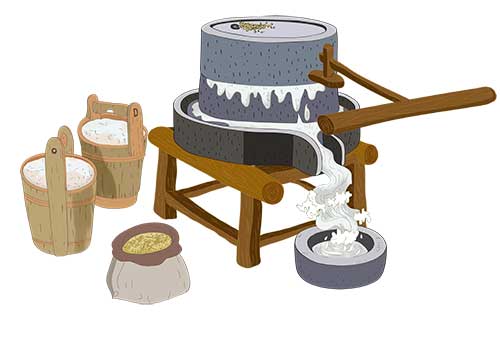 Making tofu is a traditional handicraft
Making tofu is a traditional handicraft
Legend has it that tofu was invented by Liu An (179–122 BCE ), the Prince of Huainan, grandson of the founder of the Western Han Dynasty, Liu Bang. A key element of Taoism of the time was alchemy, and Liu An was a practitioner of this art, the forerunner of modern chemistry. Scholars think that the very first tofu was made by adding salt to a batch of soy milk. When curds formed, this new solid food was born.
Grape and garlic were introduced to China through the Silk Road.
Han officials produced elaborate agricultural manuals and maintained state granaries to prevent famine. New cooking methods also contributed to productivity.
Wheat, an inferior grain for making porridge, spread widely after the invention of noodles. Intensive agriculture tripled China’s population to 60 million people, according to a census of 2 CE, but at the expense of more concentrated landholdings.
Flour milling was introduced into China during the Han era, thus allowing the onset of Chinese noodle making.
Woks were being used in China, a large bowl-shaped cooking utensil used especially in stir-frying.
Numerous archaeological finds and written sources confirm that most of the allium species were farmed at least from the Han period, if not earlier.
It is believed that dumplings were invented by Zhang Zhongjing, a Chinese medicine practitioner who lived in the Eastern Han Dynasty. Learn more about the story.
Northern and Southern dynasties (317–589 CE), after numerous foreign invasions, dairy products were introduced, at least among northern Chinese.
Wheat was to the north to what rice was to the south. Most characteristically northern, however, were the bread, cakes, and wheat-based noodles, all subsumed under the generic term “bing” until the end of the Tang (618–907CE). These foodstuffs were highly appreciated by the aristocracy and identified those who ate them as “northerners”, as did mutton and milk products. The cuisine of the south, by contrast, was characterized by rice and also by pork, vegetables, and fish.
Tang Dynasty (618-907 CE) Tea was drunk by many people
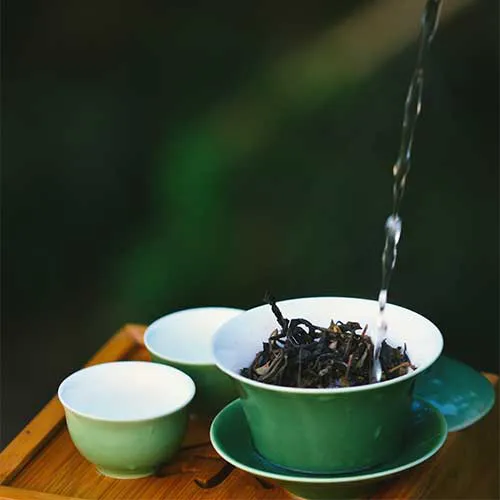 Drinking tea has many health benefits
Drinking tea has many health benefits
Spinach was acquired from Persia. This was a time when there was great interest in the exotic, and in North China, fresh fruits that grew in faraway southern countries were highly prized. Thus we know that citrus fruit and litchi were carried from Lingnan, Canton (today in the Guangdong region) by a special courier for Empress Yang Guifei.
Drinking tea became popular for all social classes. The famous book titled, Classic of Tea was written by Lu Yu in the middle of the eighth century.
The walnut, pistachio, and nut almond were introduced to China.
Fish formed a very significant part of the Tang diet. They were harvested from the sea, rivers, lakes, and ponds, in every conceivable variety. In north China during the Tang period, goat's milk was widely regarded as a wholesome beverage, of especial value to the kidneys.
By 640 CE China had developed sugar cane cultivation techniques using technology acquired from India.
Song Dynasty (960--1279 CE) Early-ripening rice was introduced into China from Champa
Between the end of Tang and the beginning of the Song, the center of gravity of Chinese civilization shifted from the north to the south.
Kaifeng and Hangzhou, the respective capitals of the northern and southern Song dynasties, were the scenes of an unprecedented mixing of populations, for it was here that inhabitants of north and south, as well as people from Sichuan, met and mingled. In this encounter, each group became conscious of its food habits. Once they were recognized as distinct, the culinary styles of the north, the south, and Sichuan were combined and finally become the cuisine of the capital.
A new variety of early-ripening rice was introduced into China from Champa, a kingdom then located near the Mekong River Delta in what is now Vietnam, and by 1012 it had been introduced in the lower Yangzi and Huai river regions.
Yuan Dynasty (1271-1368CE) More foreign food products and methods were introduced.
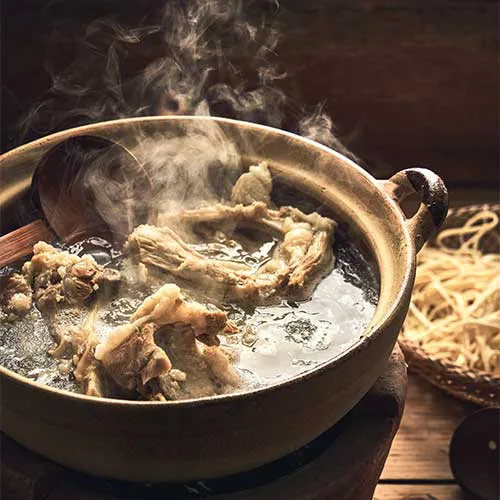 Stewed Mutton
Stewed Mutton
The nomadic Mongols embarked upon an unprecedented mobilization of peoples, goods, and ideas to forge the largest neighboring empire the world has known.
The famous Marco Polo also came to China in the Yuan dynasty. The contacts with the West also brought the introduction to China's major food crop, sorghum, along with other foreign food products and methods. The wine distillation techniques were introduced to China. Keep reading for the in-depth detail on Baijiu (Chinese Alcohol) and Ganbei (Bottoms up) - Chinese Drinking Culture.
The Mongolian rulers were especially fond of mutton, and 80% of the dishes in their palace were made of mutton. These mutton dishes still are made today, such as stewed mutton, instant–boiled mutton, quick-fried mutton tripe, and fried dumplings with minced mutton.
Ming Dynasty (1368-1644 CE) “American plants” especially chili pepper was introduced to China
In the mid-sixteenth century, the “American plants” appeared in the coastal areas of Fujian and Guangdong, with the Portuguese and their ships instrumental in bringing maize, sweet potatoes, and peanuts to China. The tomato did not become known until the following century, and the chili pepper was during the eighteenth century.
Qing Dynasty (1644-1911 CE) Manchu-Han Imperial Feast and Tsingtao Beer Company
Onion was introduced to China.
Manchu-Han Imperial Feast: the Qing Dynasty had already been established and China was ruled by the Manchurians from the north. The Manchus and the Han people, however, did not get along very well. To bring them together in peace, the great emperor Kangxi held a 3-day celebration for his 66th birthday, inviting high-level Manchu and Han officials. The six banquets that were served over the three days consisted of impressive dishes of both Manchu and Han origin. In all, there were said to be no less than 180 dishes with the possibility of more than 300 being served. Some of the famous dishes included were shark fin, tiger tail, camel hump, bear paw, and sea cucumber.
The first restaurants in China specializing in French and English cuisine opened in the 1860s, but it would take another two decades for the indigenous Chinese upper class to welcome them enthusiastically. The atmosphere of these eating-places was often more attractive than the food or drinks available, which was largely prepared by Cantonese cooks, even in the north of the country, and frequently relied on imported conserves, at least to begin with.
At the end of the 19th century, European immigrants from Poland, Germany, and Czechoslovakia came to China and shared their expertise in beer brewing. Tsingtao Brewery was founded in 1903 and was owned by German businessmen, who first established a company called the Anglo-German Brewery Co. Ltd. in Hong Kong. The businessmen then moved to Qingdao in the Shandong Province and subsequently named their new brewery after the name of the area.
Modern China from 1949
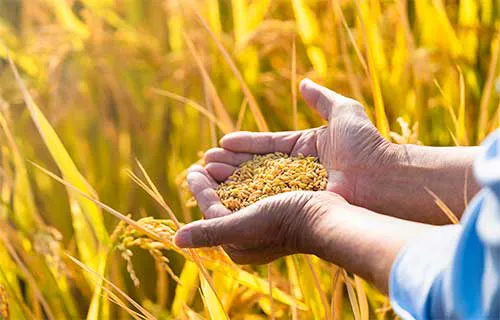 Hybrid Rice
Hybrid Rice
In 1973, Mr. Yuan Longping and his team developed hybrid strains that typically yielded 20 percent more rice than conventional varieties, transforming Chinese agriculture after years of famine and scarcity. Some 10,000 years after Chinese farmers began cultivating rice near the Yangtze River; China now produces more than 200 million tons of rice a year, more than any other nation.
In 1988, the Ministry of Agriculture and Rural Affairs launched an urban food security policy known as the “Vegetable Basket Program.” The program mandates that city mayors be responsible for the provisioning, affordability, and safety of non-grain foods, particularly fresh produce and meat. Local governments set specific goals for self-sufficiency rates of different kinds of food to demonstrate their commitments to the Vegetable Basket Program.
In 1989, Mr.Wang Leyi, a village Party chief in Shouguang eastern China's Shandong Province, built a new greenhouse that did not require coal but relied solely on sunlight for warmth in winter. In the past, growing vegetables in freezing temperatures in north China’s winter had been a headache for locals, as they had to burn coal to raise temperatures inside a makeshift greenhouse, and the demand for coal was around five tons each winter. For residents in north China, they do not have an array of vegetables during winter in the past, but armed with new greenhouse technology, farmers in northern China were able to grow all kinds of vegetables in winter.
In 1987 first KFC opened in Beijing and, in 1990, McDonald opened its first restaurant in Beijing. As we all know, Western fast foods are mostly processed, high in saturated fat, carbohydrates, and sugar which were unfamiliar to the Chinese. Today, China has seen a rise in childhood obesity.
- Food in Chinese Culture Anthropological and Historical Perspectives by K. C. Chang
- Cuisine and Culture A History of Food and People by Linda Civitello
- The Cambridge World History of Food by Kiple, K.F. and K.C. Ornelas
- The Land of the Five Flavors - Thomas O. Hollmann, translated by Karen Margo
- Mastering the Art of Chinese Cooking by Eileen Yin-Fei Lo

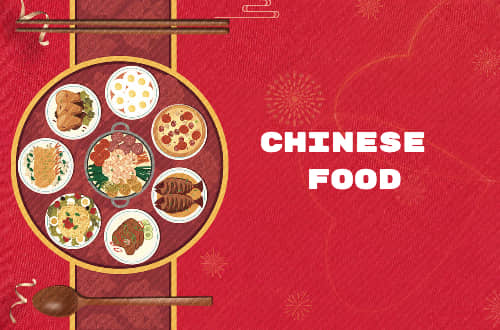 Chinese Food and Related Customs
Chinese Food and Related Customs 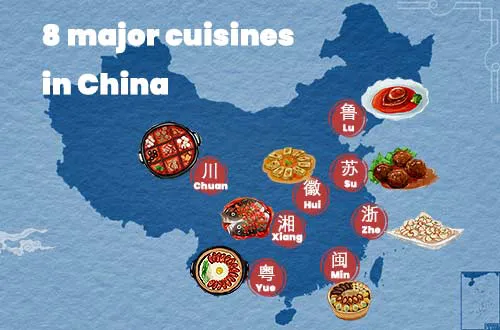 Regional Cuisines in China
Regional Cuisines in China 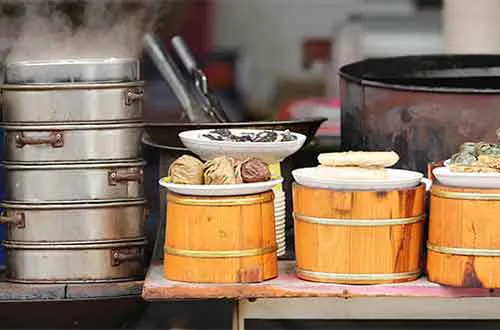 Chinese Cooking Methods
Chinese Cooking Methods 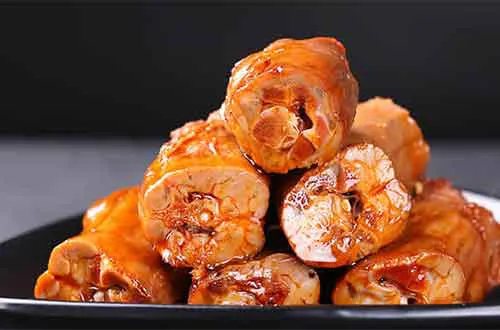 Meats in Chinese Food
Meats in Chinese Food